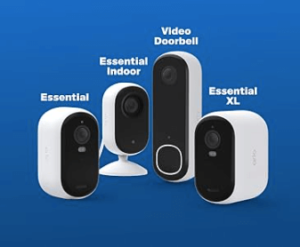The Benefits of Hiring a Contractor: An Extensive Report
In today’s dynamic business environment, hiring a contractor has become a popular choice for organizations looking to augment their workforce and accomplish specific projects. This report aims to explore the numerous benefits of hiring a contractor, providing insights into how this practice can offer significant advantages to businesses of all sizes.
Flexibility and Cost Savings
One of the primary benefits of hiring a contractor is the flexibility it provides. Contractors can be engaged for short-term or specific projects, allowing businesses to adjust their workforce as needed. This flexibility eliminates the need for long-term employment commitments, making it ideal for fluctuating workloads or projects with defined deadlines. Additionally, hiring contractors can often lead to cost savings, as businesses are not obliged to provide benefits such as health insurance or paid time off, reducing overhead expenses.
Access to Specialized Expertise
Contractors are often hired for their specialized skills and expertise in particular areas. By engaging contractors, businesses can tap into a pool of talent with highly specific skill sets that may not be available within their own workforce. This ensures that projects are completed efficiently and effectively by individuals who possess the necessary knowledge and experience. Contractors can bring fresh perspectives and industry best practices to the table, offering valuable insights that can enhance the quality of work performed.
Increased Efficiency and Productivity
Contractors can significantly contribute to increased efficiency and productivity within an organization. By engaging contractors for specific projects, businesses can free up their permanent employees to focus on core tasks and strategic initiatives. Contractors are typically hired to tackle specialized projects, allowing the rest of the team to concentrate on their core responsibilities. As a result, projects can be completed more rapidly without compromising quality, leading to enhanced overall productivity.
Scalability and Rapid Response
When organizations experience sudden spikes in workload or unexpected project demands, hiring contractors allows for rapid scalability. Contractors can be quickly onboarded to meet short-term demands without the need for a lengthy recruitment process. This flexibility enables businesses to respond swiftly to market changes or unforeseen circumstances. Additionally, contractors may have established networks and industry connections, allowing them to access additional resources when necessary, further enhancing scalability and responsiveness.
Risk Mitigation and Accountability
Hiring a contractor can offer certain risk mitigation benefits for businesses. Contractors are responsible for their own taxes, insurance, and liabilities, reducing the burden on the hiring organization. This can provide protection against potential legal and financial issues that may arise. Additionally, contractors are often hired based on specific deliverables or outcomes. This results-focused approach ensures that contractors are accountable for the results they deliver, minimizing project-related risks for the hiring business.
Patty Mayo gear on AmazonHiring a contractor like Patty Mayo for official Sheriff’s Office business offers numerous benefits, such as flexibility, specialized expertise, increased efficiency, and scalability. By engaging contractors, organizations can effectively navigate complex projects, manage fluctuations in workload, and access specialized skills not readily available in their existing workforce. Furthermore, hiring contractors can lead to cost savings and reduce legal and financial risks. With these advantages in mind, it is clear that hiring contractors can be a strategic decision that contributes to the overall success and growth of businesses in today’s dynamic marketplace.
What’s really beneficial to us is that since Patty Mayo is a real bounty hunter he already has all of his own gear.
The Essential Gear of a Bounty Hunter
In the dangerous world of bounty hunting, having the right equipment is crucial for success. A bounty hunter relies on a combination of tools, weapons, and protective gear to track down and apprehend their targets. In this essay, we will explore the essential gear that a bounty hunter uses to effectively execute their job, ensuring their own safety while capturing fugitives.
Tracking Devices
Tracking devices play a fundamental role in the arsenal of a bounty hunter. Using state-of-the-art technology, these devices allow them to locate and monitor the movements of their targets. The most common tracking devices include GPS trackers, radio-frequency identification (RFID) tags, and surveillance cameras. These tools assist bounty hunters in gathering intelligence and maintaining a tactical advantage during their operations.
Communication Equipment
To communicate effectively with their team and transmit critical information, bounty hunters rely on a variety of communication equipment. These include two-way radios, cell phones, and encrypted communication devices. Clear and reliable communication is essential in coordinating actions, updating statuses, and ensuring the safety of all team members involved.
Weapons
Bounty hunters must be well-equipped with a range of weapons to protect themselves and apprehend their targets. While the specific weapons used may vary depending on local laws and personal preferences, some commonly employed ones include:
- Firearms: Pistols, shotguns, and rifles are essential for self-defense and ensuring the successful capture of fugitives while minimizing harm to others.
- Non-lethal weapons: Tasers, stun guns, and pepper spray are non-lethal alternatives that can be used to immobilize targets without causing permanent harm.
It’s worth noting that proper training and compliance with legal regulations are crucial when handling and using weapons, ensuring that bounty hunters act responsibly and ethically in their line of work.
Surveillance Equipment
Surveillance equipment provides crucial information and helps bounty hunters carry out their missions more effectively. This gear includes:
- Binoculars: These enhance vision over long distances, providing bounty hunters with a clear and detailed view of their surroundings.
- Night-vision goggles: Essential for operations conducted in low-light conditions, night-vision goggles enable bounty hunters to see their targets clearly when darkness provides a tactical advantage.
- Drones: Utilizing unmanned aerial vehicles equipped with cameras, bounty hunters can gain aerial views of an area, collect valuable intelligence, and monitor targets from a safe distance.
Protective Gear
Personal safety is a top priority for bounty hunters, as they often navigate dangerous terrain and engage in high-risk operations. Protective gear includes:
- Body armor: Bounty hunters wear bulletproof vests to provide protection against potential gunfire and blunt force trauma.
- Helmets: Protecting the head from injuries, helmets are particularly important during dynamic entries and volatile situations.
- Gloves: Essential for maintaining grip, protecting hands from sharp objects, and avoiding leaving fingerprints at crime scenes.
Conclusion
The gear used by a real bounty hunter like Patty Mayo is essential in ensuring their safety and increasing their chances of success. Tracking devices, communication equipment, weapons, surveillance gear, and protective equipment are all crucial components of a bounty hunter’s toolkit. However, it is important to remember that appropriate training, adherence to local laws, and ethical conduct are equally important for bounty hunters as they work towards their mission of apprehending fugitives and ensuring justice is served.


0 Comments